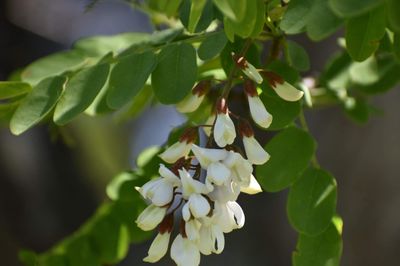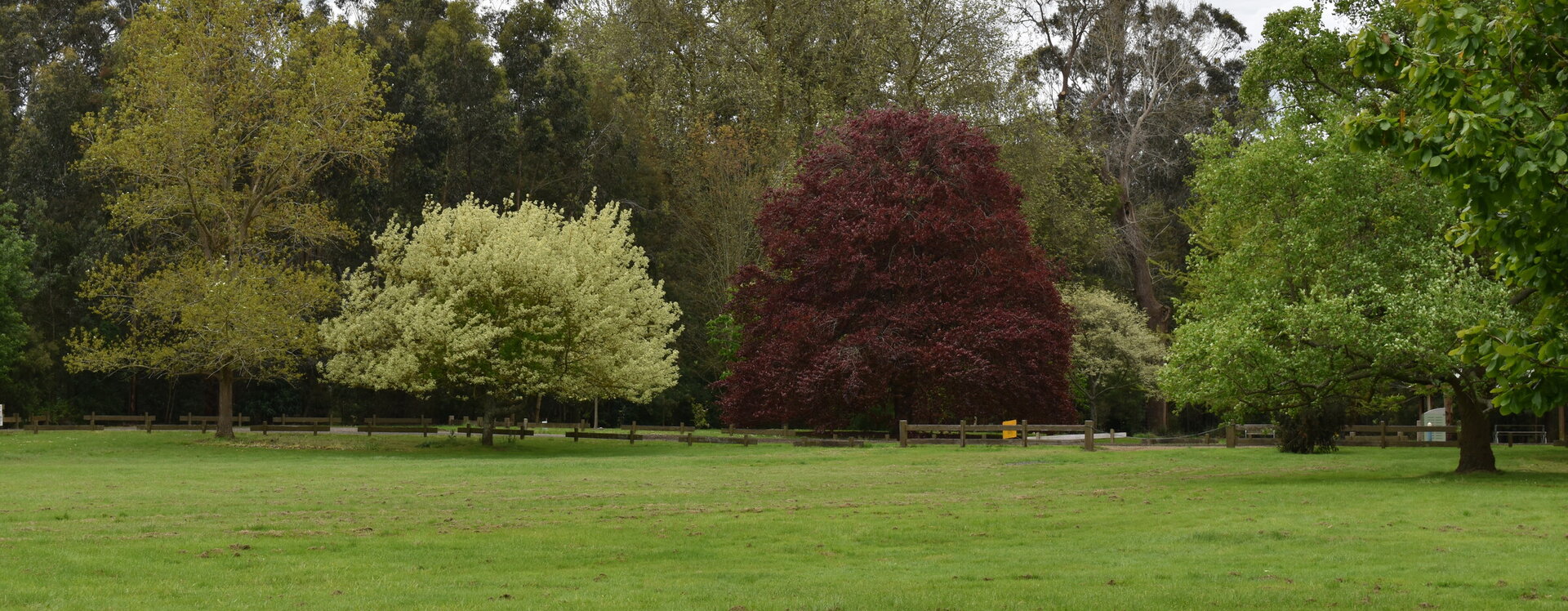


Robinia pseudoacacia
Robinia
Robinia pseudoacacia, common name black locust, is is a medium-sized hardwood deciduous tree, belonging to the tribe Robinieae of the legume family Fabaceae. It is endemic to a few small areas of the United States. This tree reaches a height of 12–30 m with a diameter of 0.5–1.5 m). It is a very upright tree with a straight trunk and narrow crown that grows scraggly
with age. The dark blue-green compound leaves with a contrasting lighter underside give this tree a beautiful appearance in the wind and contribute to its grace. Black locust ioften spreads by underground shoots or suckers, which contributes to the weedy character of this species. In Mossvale Park, the tree that remains is a sucker of earlier Moss era plantings. Young trees are often spiny, but mature trees often lack spines.Leaves imparipinnate, 20–35 cm long, rachis adaxially grooved. Leaflets in 2–12 pairs, usually opposite, with an additional one at the end of
the rachis; blades oblong, elliptic or ovate, 2–5 × 1.5–2.5 cm, margin entire. Flowers fragrant, in
pendulous, many-flowered, axillary racemes 10–20 cm. Corolla white to cream, with yellow spots inside, up to 2 cm long. Pod brown or with reddish-brown stripes, linear-oblong, 5–12 × 1–1.5 cm, compressed, with narrow wings along a ventral suture and 2–15 seeds; calyx persistent. Seeds brown to dark brown, slightly glossy, 5–6 mm long and c. 3 mm wide, rounded and oblique to one end.
136.00 Location C5/D5 Latitude; -38.402394690000 Longitude; 146.052699270000

